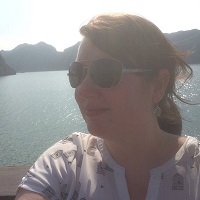∞ Originally published in the Vancouver Sun, August 20, 2019 ∞
Adrian Lewis circles a hill in the fading forest light on the shores of Little Shuswap Lake and for a moment it seems like the First Nations guide disappears into the crisp fall air. Instead, he slips under the earth into a kekuli, the traditional winter pit house of the Secwepemc peoples who lived on this land for 10,000 years.
As a fire roars in the hill house, the cultural coordinator for Quaaout Lodge and Spa (http://quaaoutlodge.com) at Talking Rock Golf Resort Lodge holds a talking stick and shares Shuswap Nation history. The territory was home to a village of 4,500 sharing an oral history and capturing memories on rock canvas in red ochre pictographs. Lewis spins these stories to the sound of logs popping, but eventually stops short.
“I know those stories,” he says, halting before a new tale, “but I haven’t been authorized to tell them yet.” His people are Kingcolith of the Nis’ga’a Nation; he’s an interpreter too.
Throughout B.C.’s interior both the stories and names are changing as Indigenous self-determination and tourism mature. The industry’s expanded from 900 outfits in 2004 to 1,500 today (200 in BC), according to the Indigenous Tourism Association of Canada (https://indigenouscanada.travel), and each region is developing a distinct narrative, drawing tourists seeking authentic experiences.
From the stunning scenery of the Adams River Salmon Run to cultural immersion in canoeing, Aboriginal-owned accommodations, Indigenous foods and First Nations wineries, exploring the sights and stories of the Shuswap makes the perfect off-season weekend cultural and nature escape from Vancouver.
Quaaout — “Qw7awt”in Secwepemc— Lodge about 12 km north Chase on Little Shuswap Lake is an ideal base for exploration. The lush property, owned by Little Shuswap Lake Indian Band, is dotted with lodge pole pines, eagles fly overhead; Canada geese roam golf greens. A warm “waytkl” (welcome) comes with thoughtful touches: Indigenous-made toiletries, hot bannock baskets and a directory with tips on avoiding bears and cougars.
It’s good advice, as the next day we wander forest trails enjoying the Adams River Salmon Run. Millions of salmon spawn here each year, making this the largest run in North America. At one time, Lewis explains, the river ran red. Now, the Salute to the Sockeye Festival is a cultural attraction with food and entertainment.
It’s a perfect day of wildlife viewing, fall foliage and fresh air in what was once Roderick Haig-Brown Park, but has been renamed Tsutswecw (Many Rivers) Provincial Park. Riverbed stones sparkle in dappled sun, trees flare golden like lit matches, and ruby-red salmon flash in the water, making children on field trips giggle.
“The point of telling kids these stories,” says Don Paterson of the Adams River Salmon Society (http://salmonsociety.com), talking salmon conservation, “is they might bring it up with their families and continue the conversation.” For him, the run’s become a meditation. “It’s so sad, but so beautiful,” he says of the river dance of death and rebirth.
In winter, salmon eggs hatch into alevin, which bury in gravel, emerge in spring as fry and feed in the lakes. In spring of their second year, 200 smolts of every 4,000 eggs begin the 485-kilometre journey to the Pacific. Two and a half years later, 10 of the 200 head upriver, led by the water’s smell – an olfactory memory imprinted at birth – until they find home, spawn, and come full circle.
After a day outdoors, relax at Quaaout Lodge’s Jack Sam’s restaurant and dine on wild salmon, venison tenderloin or a rich elk stroganoff. Add a glass of Kamloops’ Monte Creek (https://www.montecreekranchwinery.com) Chardonnay and toast sunset on the mist-ribboned lake.
The next day, get right in the water with the salmon on a canoeing and storytelling jaunt with Indigenous outfit Moccasin Trails (https://www.moccasintrails.com) . Frank Antoine and Greg Hopf launched the business in 2018 to bring history to life with authentic activities, foods and experiences.
“We need you to feel it,” says Hopf, of the Dene Nation. We begin with a tobacco ceremony honouring elders then glide over waves as Justin Prairie Chicken, a Shuswap Nation knowledge keeper, sings traditional songs to the beat of a hide drum: it’s a pure moment of peace paddling in nature.
In the afternoon, wrap up your Interior adventure in nearby Kamloops, where a trio of wineries are making names for themselves in the Thompson Valley – quirky, offbeat, and a little bit country – in the footnotes of the Okanagan’s dominant wine narrative.
This emerging region, four hours’ drive from Vancouver, is a lovely, low key way to experience wines in BC.
First stop? Harper’s Trail (http://harperstrail.com) , Kamloops’ first winery, named for a pioneer rancher. Their motto? Taste the untamed land. It’s bang on branding: as we sip mineral Rieslings, wild horses grazing in sagebrush hills.
Then on to Monte Creek Ranch, a quirky ranch/winery where grapes ripen in the shadow of hoodoos: white stone plinth formations line hills along the Thompson River. Inside, the winery memorializes Billy Miner, the Gentleman Bandit behind the last great Canadian train robbery here in 1906.
Sample their Hands Up! White, Ranch Hand Red Reserve, or fruit wines from blueberry and haskap berries. Wrap up with Privato (http://privato.ca) , a boutique winery producing Burgundy-style reds and award-winning Pinot Noirs.
Kamloops, (in Secwepemc, Tk’emlupsmeans ‘where the rivers meet’), is experimenting with cool climate viticulture, aiming to become the next frontier in BC winemaking. It’s certainly got the looks. Fall scenery here is spectacular: lined hills of golden grape leaves on heaving late-harvest vines set against red and ochre flamed forests. Before you leave, bottles in tow, stop in for a final immersion at the town’s Sepwepemc Native Museum and Heritage Park.
If you’re going home with new stories, make sure they’re the true ones.
Indigenous wine tourism is growing in B.C.
It began with Nk’Mip Cellars (http://nkmipcellars.com) , the first Indigenous (now partly-owned) winery in North America, founded some 15 years ago by the Osoyoos Indian Band. Today, it’s a tourist hot-spot, attracting wine lovers to its hillside winery, resort, RV park, cultural interpretive centre and outdoor dining. Taste their delicious Dreamcatcher white or sip from their premium Qwam Qwmtline of plummy Pinot Noirs and Syrahs.
In Kelowna, Bernice and Robert Louie, former Chief of Westbank First Nation, opened Indigenous World Winery (http://indigenousworldwinery.com) in 2016. Some wines are named for their children: Ho We Nam Ho We Nemand La’p Cheet sparkling wines are named for daughters; the Hee Hee Tel
Kin white is named for a son training to be a winemaker. It’s won Okanagan winery of the year, 90+ medals, and community pride.
“I know where this is going and I want to be there when it gets there,” wine associate Helena Perksen says of the venture. Stay for a tasting flight or dine at the Red Fox Club restaurant, where bannock, coho salmon, elk with foraged nettles and bison back ribs are served with a side of wine and cultural enlightenment.
If you go:
Shuswap Tourism: (https://shuswaptourism.ca)
Tourism Kamloops (http://tourismkamloops.com)

I’m a different kind of travel writer. I craft long-form, cover-worthy feature-length travel articles with style and substance. I tell travellers not just what to do, but why. Find out how to work with me.


